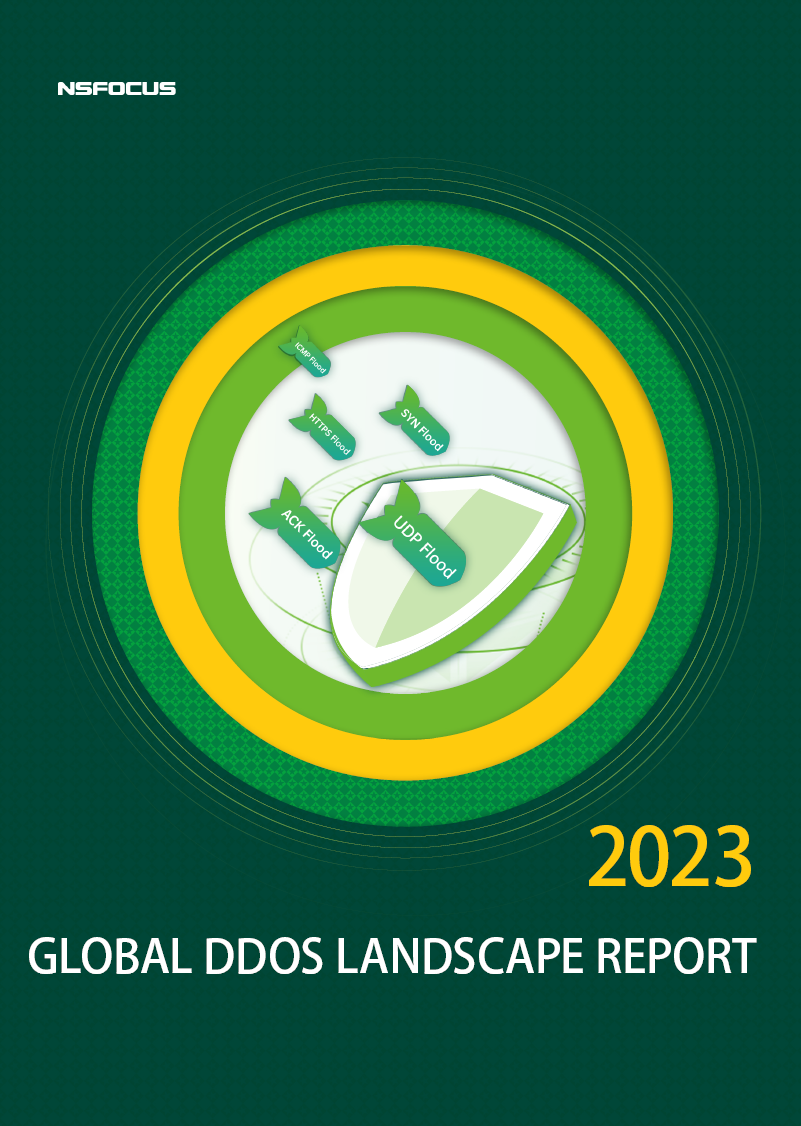RESOURCES
THANK YOU FOR YOUR INTEREST IN NSFOCUS REPORTS
2023 Global DDoS Landscape Report
 The 2023 Global DDoS Attack Landscape Report provides a comprehensive analysis of the current state of Distributed Denial of Service (DDoS) attacks, highlighting significant shifts in strategies, targets, and the evolving threat landscape. A remarkable increase in attack scales, with a surge in large-scale incidents, has been observed, indicating a more aggressive and coordinated cyber-attack ecosystem. The report reveals a clear trend towards the use of Application Layer attacks, with HTTPS Flood emerging as the predominant method, leveraging the widespread adoption of HTTPS protocols.
The 2023 Global DDoS Attack Landscape Report provides a comprehensive analysis of the current state of Distributed Denial of Service (DDoS) attacks, highlighting significant shifts in strategies, targets, and the evolving threat landscape. A remarkable increase in attack scales, with a surge in large-scale incidents, has been observed, indicating a more aggressive and coordinated cyber-attack ecosystem. The report reveals a clear trend towards the use of Application Layer attacks, with HTTPS Flood emerging as the predominant method, leveraging the widespread adoption of HTTPS protocols.
Key Findings:
- Scale and Frequency of Attacks: A significant increase in large-scale DDoS attacks with a record number of incidents exceeding 500Gbps, indicating a more aggressive and coordinated threat landscape.
- Application Layer Dominance: HTTPS Flood emerged as the leading DDoS attack method, reflecting a shift towards application layer attacks that exploit the widespread use of HTTPS protocols.
- Geopolitical Cyber Warfare: DDoS attacks are increasingly being used as strategic tools in geopolitical conflicts, targeting government and critical infrastructure to disrupt services and create chaos.
- APT Attack Prelude: There’s a growing trend of DDoS attacks serving as a cover for more sophisticated APT attacks, highlighting the need for comprehensive defense strategies.
- Emerging Attack Vectors: The report identifies new DDoS attack methods, such as SLP reflection amplification and HTTP/2 Rapid Reset attacks, underscoring the importance of vigilance against evolving security threats.
- Botnets and IoT Vulnerability: Botnets, especially those operating on IoT platforms, remain a significant threat, with botnets being increasingly commercialized, making DDoS attacks more accessible to a broader range of attackers.
- Commercialization of DDoS Services: The availability of DDoS attack services for hire, often through social media and dark web platforms, has democratized access to these attacks, posing a challenge for cybersecurity defenses.
